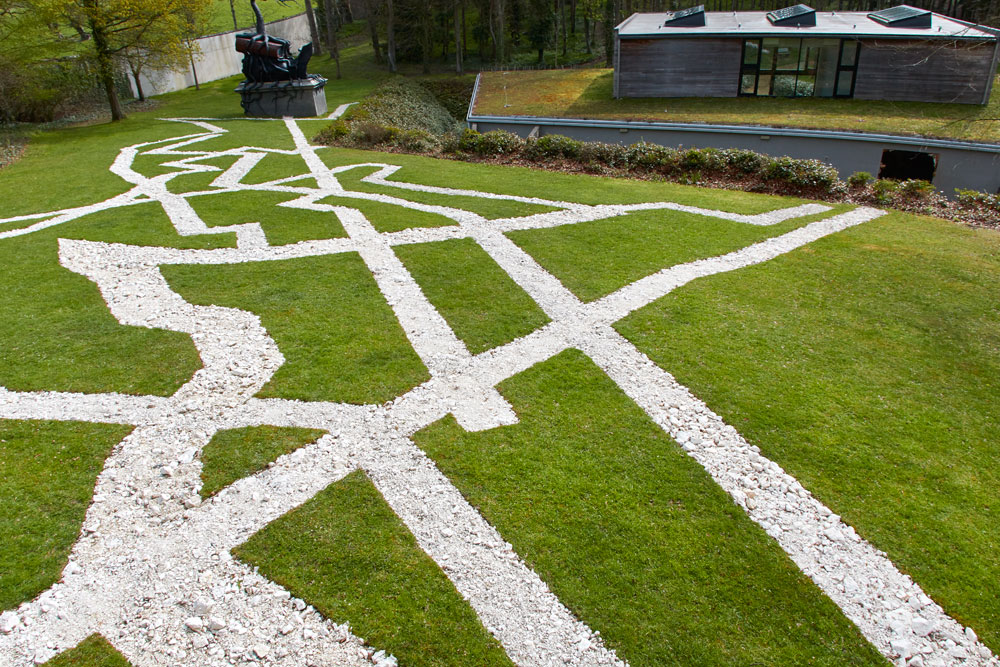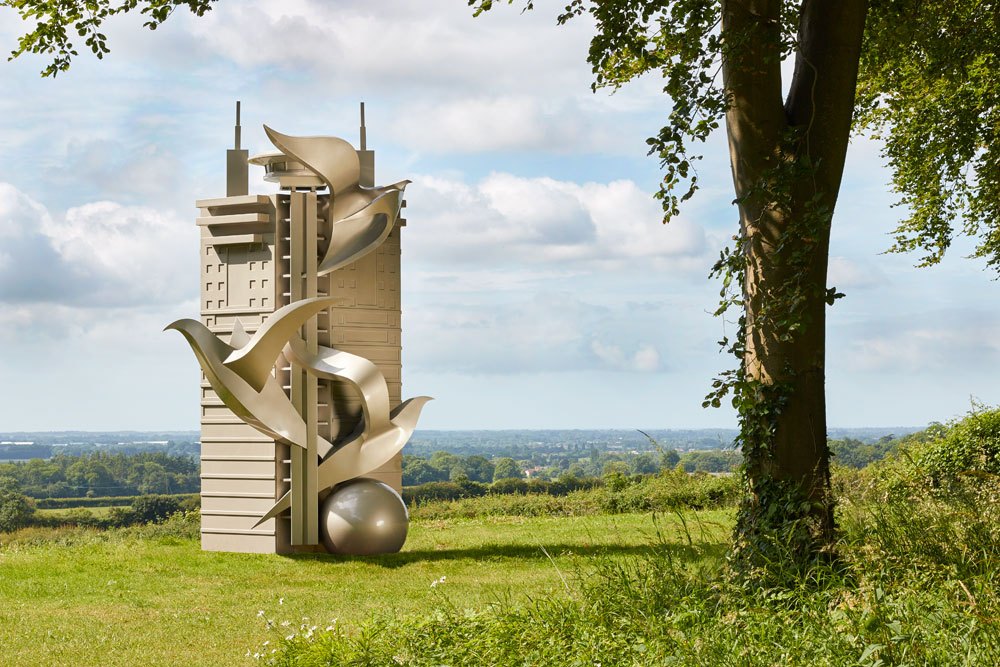A Beautiful Disorder
Cass Sculpture Foundation, Goodwood, UK
Cass Sculpture Foundation, Goodwood, UK

Sculpture parks invite the strange and the spectacular. A wander through the forest is a tale in itself; if the art disappoints, at least the trees are beautiful. Cass Sculpture Foundation’s new exhibition, ‘A Beautiful Disorder’, curated by Ella Liao, Claire Shea and Wenny Teo, has commissioned 18 established artists from Greater China (the mainland, Hong Kong and Taiwan) to create sculptural works to be installed in Cass’s 26-acre site in the Goodwood forest. Four years in the making, the show takes its name from Jean Denis Attiret’s account of the Chinese landscape tradition. A Jesuit missionary who became court painter to the Qianlong emperor in the mid-18th century, Attiret described the Chinese garden as ‘a beautiful disorder, an anti-symmetry’. The curators suggest that each work ‘invites us to reflect on China’s past, present and future relationship with the world at large’. As ever, such seductive geopolitical pronouncements risk tarring artists with the broad brush of national identity: within the increasingly homogenous global currency of contemporary art, what is Chinese about contemporary Chinese art? A diversity of artists address the exhibition’s central conceit of the ‘borrowed view’ – an aesthetic principle of the Chinese garden’s multiple framing devices – not by way of answers, but by translations, interfaces and hybrids.

The works range in scale and scope from Song Ta’s Why Do They Never Take Colour Photos? (all works 2016), a hulking (and rather romantic) 7-metre-wide bust of Mao Zedong, to Zhang Ruyi’s Pause, a contemplative series of tiny cast-concrete plug sockets, inserted almost invisibly into tree trunks. Song’s prankish monolith references a public monument of the Chairman in a Guangzhou park, sculpted by the eminent director of the art school from which the artist himself graduated. One night, bemoaning the monotony of socialist realist sculpture, the artist and his comrades literally coloured in the original sculpture, which was later removed by the authorities. Here at Cass, it is re-created in a grey limewash that also covers the surrounding vegetation. Like the incongruous presence of his image in the hyperconsumerist culture
of contemporary China, Song’s icon is at once an absurdist spectacle and an ineludible spectre amongst these verdant natural environs.

In keeping with its title, several works in the show address the duality between discordance and hybridity in today’s cultural and political landscape. Xu Zhen/MadeIn Company’s Movement Field is a Zen garden whose forking paths are a superimposed cartography of historical protest routes, while Cui Jie’s Pigeon’s House blends a host of 20th-century architectural gestures into a piece of civic sculpture whose chimeric consistency is reminiscent of the dizzying architectural junkspace of the Shanghai skyline. A sense of sublime artifice is heightened in Cheng Ran’s Crossroads. Strangely beautiful, it comprises a blinding floodlight atop a tower of bare scaffolding, a ray of ‘eternal sunshine’ in the dank woodlands. Meanwhile, Wang Yuyang’s Identity presents an idiosyncratic vision of the artificial sublime. Resembling a 5.5-metre pancake stack served up by Frank Gehry, Identity appears to be the result of Wang feeding Karl Marx’s Das Kapital (Capital, 1867) into modelling software as binary code and leaving the computational commands of 3DS Max to do the rest. The conflated interfaces of digitality and exchange-value reflect back upon the ‘borrowed views’ of global culture – translations of translations – an autonomous whorl of data, images and capital.

The prospect of ‘growth’, the political watchword of China’s ascent (as well as Britain’s economic stagnation), raises unknown potentials in the forest. Borrowing from the meticulously landscaped civic garden aesthetics of modern Chinese cities, Zheng Bo has installed a flowerbed spelling out the work’s eponymous party slogan, ‘Socialism Good’, in vibrant blossoms at Cass’s entrance. A simple appropriation of camply earnest state propaganda is complicated by Zheng gesturing proudly to the work’s newest focal point: a single weed rising determinedly between freshly planted flowers. Over time, Zheng’s socialist-realist typography will be left to the ravages of the British countryside, to be colonized by local plants. Meanwhile, inspired by the Hong Kong-mainland border, Li Jinghu’s Escape (My Family History) has searchlights roving over two chainlink fences, between which the illuminated lines of grass will grow taller than the surrounding greenery. Nature acts through these works in the character of the elemental, compelling their systems even as it disrupts them.

‘A Beautiful Disorder’ is a large, disparate and, at moments, beautiful show, upon which the ironies of global exchange are not lost. It makes its timely arrival at a moment in which the British government – unmoored from Europe – is looking optimistically to a ‘golden era’ of UK-Chinese relations. Fabricated in China and shipped into West Sussex, this exhibition concerning the ‘borrowed views’ of contemporary China seems itself indicative of the country’s burgeoning cultural influence, alongside its youthful status as an economic superpower. As Song Ta enthusiastically blasts hip-hop over a performance while mingling with his Barbour-clad benefactors, it is clear that the dynamics of global exchange are at work in the base as well as the superstructure.























